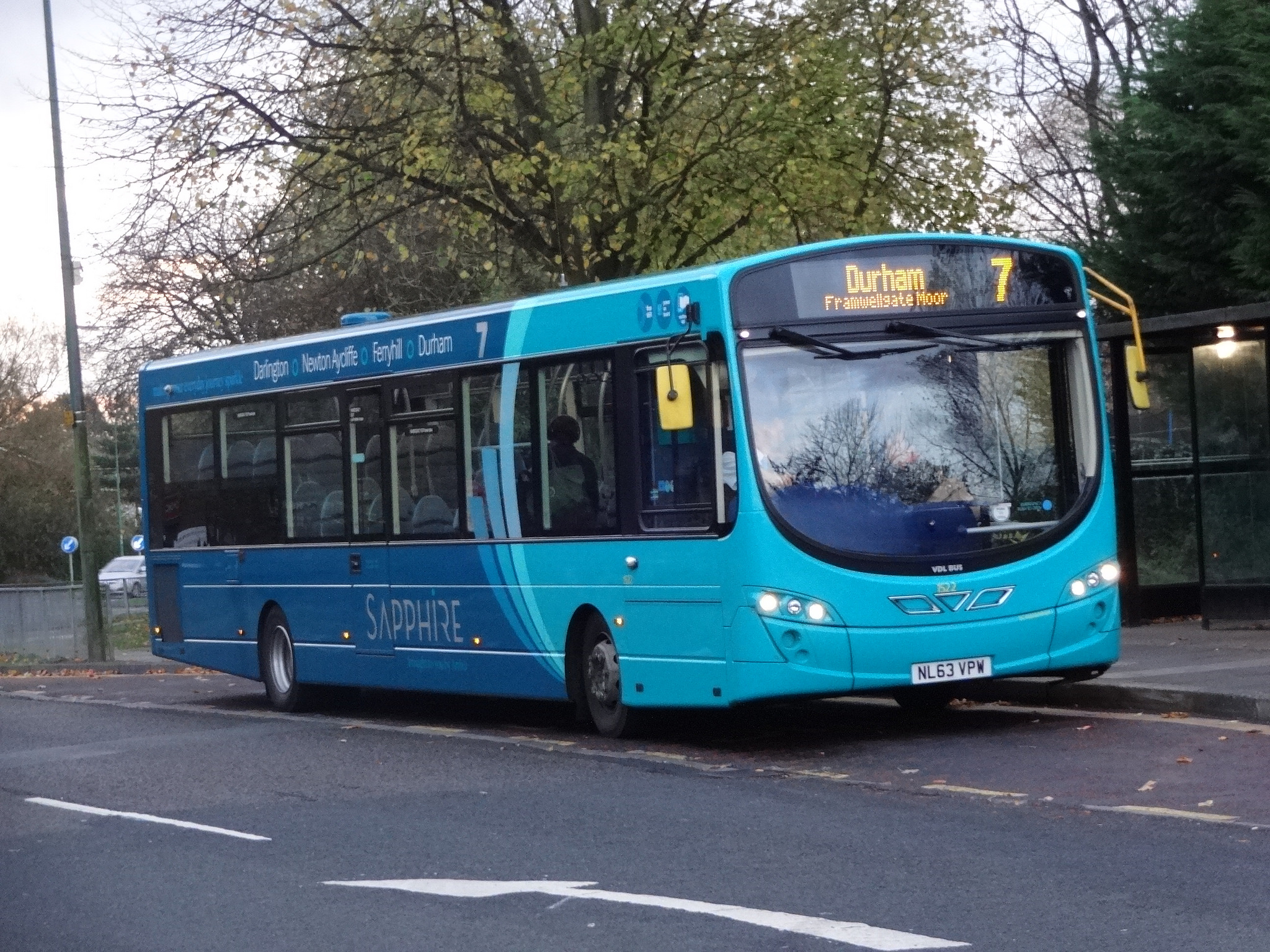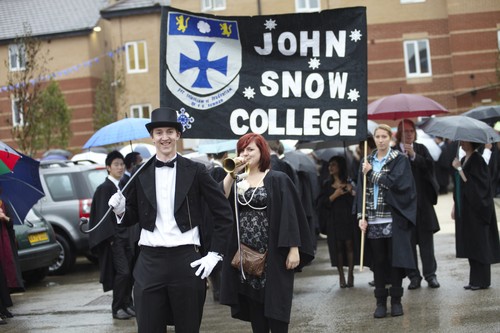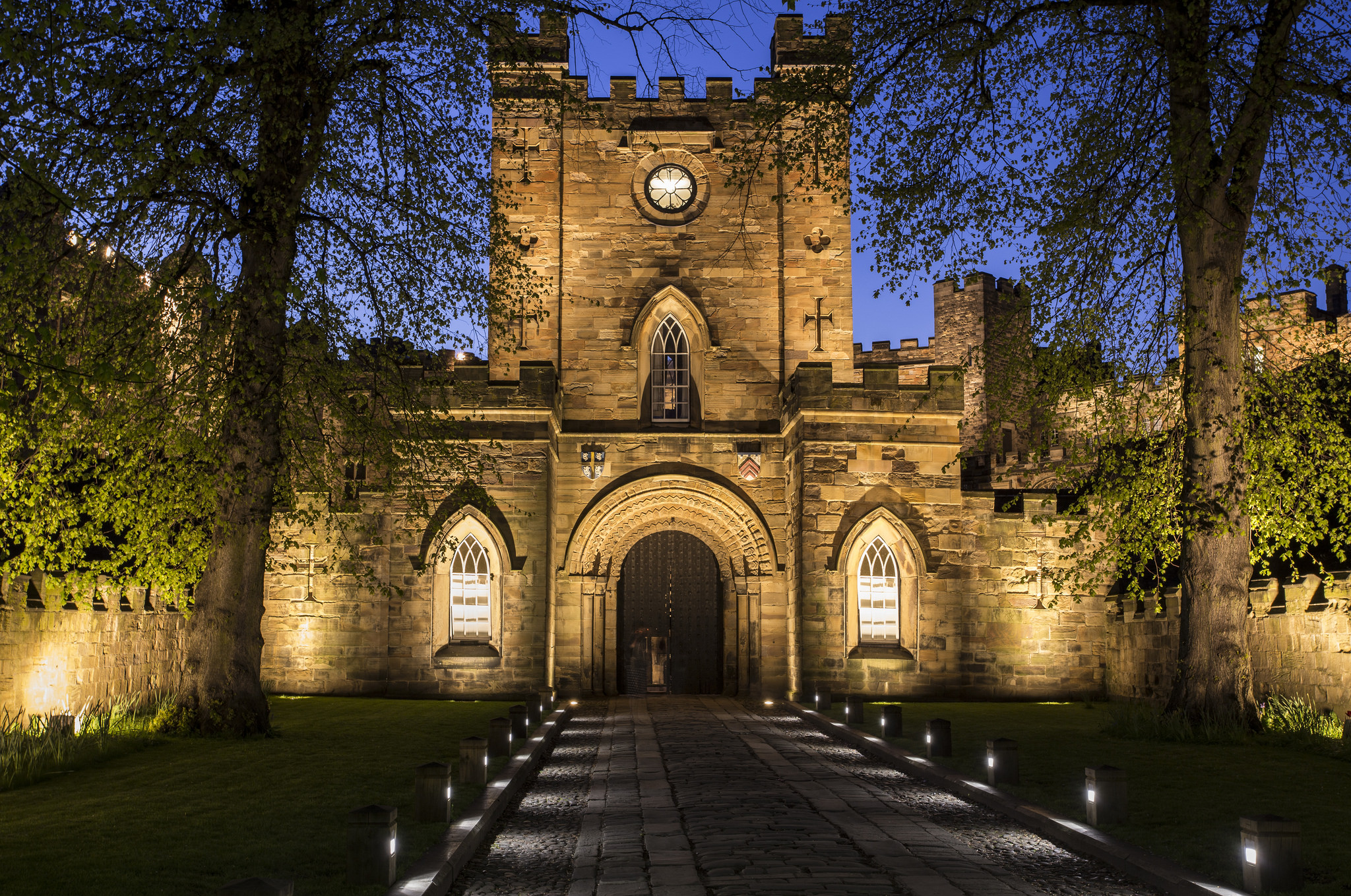The Myers–Briggs Type Indicator (MBTI) is an introspective questionnaire with the purpose of revealing psychological preferences in how people perceive the world around them and make decisions. In other words, it is a freakishly accurate indicator of the kind of person you are, how you think, and who you interact with. I think most of us before starting Durham took the Buzzfeed quiz, ‘which Durham college should you go to?’ and most of us probably ended up with Castle (I mean, who would choose hexagons over arches?) Disclaimer: I’m not a psychology student but my interest in Mjier’s Briggs led me to think about the collegiate system and how the colleges would function if places were given based on personality types. I recommend finding out your personality type before reading this (otherwise it won’t make much sense) and it only takes 12 minutes or so, what better way to procrastinate writing your summative? You can do this here.
There are 16 Mjier’s Briggs personality types and 16 Durham colleges – coincidence? I think not. (Yes, that means including John Snow and Stephenson, and no I hadn’t heard of them either.)
St Hild and St Bede: ESFJ
People who share the ESFJ personality type are popular – which makes sense, given that it is also a very common personality type, making up 12% of the population. In high school, ESFJs are the cheerleaders and the footballers, setting the tone and taking the spotlight. You will often find Hild Beeder’s in their Cheer kit, congregating in close-knit groups trekking up to wherever Hild Bede actually is. Later in life, ESFJs continue to enjoy supporting their friends, organising social gatherings and staying up to date with what their friends are doing. Basically, if you are social, popular and outgoing – Hild Bede is for you.
Collingwood: ISTJ
The ISTJ personality type is thought to be one of the most abundant, making up around 13% of the population. Basically, like Collingwood – there are plenty of them. They have a strong sense of personal integrity and enjoy keeping mentally and physically active. Although they are Introverted, ISTJs are rarely isolated; typical ISTJs know just where they belong in life, and want to understand how they can participate, often finding sanctuary in drama, sports or debating. Collingwood seems the perfect fit, known for its strong sports participation (apparently, everyone plays football.)
John Snow: ISFJ
The ISFJ personality type is quite unique, (and like John Snow, nobody truly knows them). Combining the best of tradition and the desire to do good, ISFJs are found in lines of work with a sense of history behind them, such as medicine which is convenient being stuck over in Stockton. Naturally social, an odd quality for Introverts, ISFJs are considerate and remember specifics about people who are important to them, concerned with how others feel – it’s just a shame we never get to meet any of them.
St Chads: INFJ
INFJs are very rare, and much like Chads, they make up the smallest percent of the population. INFJs share a unique combination of traits: though soft-spoken, they have very strong opinions and will fight tirelessly for an idea they believe in. They are decisive and strong-willed, but will rarely use that energy for personal gain – INFJs will act with creativity, imagination, conviction and sensitivity. Everyone wants to get know a Chads student: often allusive and arty, they find it easy to make connections with others, speaking in human terms, rather than with pure logic and fact. Unfortunately, because INFJs are so rare – like a Chad’s student, they are hard to find.
St Johns: INTJ
INTJs form just 2% of the population, making them small and selective much like Johns. With a natural thirst for knowledge that shows itself early in life, INTJs are often given the title of ‘bookworm’ as children. While this may be intended as an insult by their peers, they more than likely identify with it and are even proud of it, greatly enjoying their broad and deep body of knowledge. Known as the ‘religious college,’ it is little surprise that INTJs elevate honesty and morals above anything else. INTJs are typically reserved and serious and seem to spend a lot of time thinking.
Trevelyan: ISTP
Poor Trevs get a bad reputation, with their hexagonal architecture being their only interesting feature. It seems fitting then, that ISTP’s are natural makers, moving from project to project with an interest in logic and structure. ISTPs enjoy lending a hand and sharing their experience (talking about hexagons?) especially with the people they care about, and it’s a shame they’re uncommon, making up only about 5% percent of the population. In Durham talk, that means they are on a hill.
Josephine Butler: ISFP
Jo Bo students are known for being a bit alternative and like an ISFP, they are often true artists who live to find ways to fulfill their passions (probably knocking up a meal in their self-catered kitchen.) ISFPs are relaxed and warm, and their laidback attitude naturally makes them likable and popular – unfortunately, the trek back to Jo Bo limits this sociability somewhat but freedom of expression is always a ISFPs top priority. Anything that interferes with that, like traditions and rules, creates a sense of oppression for ISFP personalities (hence the Teletubby hill, enabling complete tranquillity.)
St Cuthbert’s Society: INFP
INFP personalities are true idealists, always looking for the hint of good in even the worst of people and searching for ways to make things better. Cuth’s students are, generally speaking, good eggs. While they may be perceived as calm, reserved, or even shy, INFPs have an inner flame and passion that can truly shine. Comprising just 4% of the population, the risk of feeling misunderstood is unfortunately high for the INFP personality type (especially if placed over on Parson’s Field.) INFPs often drift into deep thought, contemplating the philosophical more than any other personality type – think typical Durham humanities student with a Kanken backpack.
Grey: INTP
Grey College is often underrated, but don’t judge a book by its cover – or in this case, a college by its name. Grey is known for being friendly and welcoming, and like an INTP, they pride themselves on their inventiveness and creativity, their unique perspective and vigorous intellect. INTPs are usually fairly liberal and enthusiastic but are also quite shy in social settings. In terms of friendships; it’s about quality not quantity, and Grey students are often found in small groups, huddled together by the overpriced vending machine.
Hatfield: ESTP
Ok, so Hatfield don’t have the best reputation but they are certainly well known around Durham. ESTP personality types always have an impact on their immediate surroundings – often spotted socialising at parties or socials (Hatfield don’t do Klute), they keep conversations energetic, with a good dose of intelligence (and a little elitism thrown in too.) They live in the moment and dive into the action – enjoying drama, passion and pleasure, sometimes all at once. On the slight downside, ESTPs also share their personality type with Donald Trump. Sorry Hatfield.
Castle: ESFP
Like Castle, ESFPs are sought after. No other personality type is as generous with their time and energy as ESFPs when it comes to encouraging others, and no other personality does it with such effortless style. Utterly social, ESFPs value friendship above most things, wanting to share their experiences with others. They also have the strongest aesthetic sense of any personality type (think Castle Ball vibes, evening dresses and Instagram themes.)
St Aidans: ENFP
Like an Aidans student, the ENFP personality is a true free spirit. Charming, independent, energetic and compassionate, the 7% of the population that they comprise can certainly be felt in any crowd. ENFPs are fiercely independent, (nobody really ventures up that hill anyway) and they crave creativity and freedom. ENFPs know how to relax, and are perfectly capable of switching from a driven idealist to an enthusiastic free spirit (plus they have really, really good views of the Cathedral.)
Ustinov: ESTJ
Like a postgrad, ESTJs are representatives of tradition and order, embracing values of honesty and dedication. They work hard (PhD’s are pretty difficult) and they are often valued for their clear advice and guidance, e.g. proof reading a dissertation. ESTJs are strong adherents to tradition and when removed from their comfort zone, like mixing with Undergrads – shudder – they become uncomfortable and stressed.
St Mary’s: ENFJ
Mary’s used to be an all-women’s college, clearly made up of natural-born leaders, full of passion and charisma, much like an ENFJ. Forming around 2% percent of the population, they take great pride and joy in guiding others to work together to improve themselves and their community. Mary’s are known for being one of the friendliest colleges and like ENFJs, are true team players. They value order and tradition (Mary’s are big fans of gowns and formals.)
Stephenson: ENTP
ENTPs only make up about 3% percent of the population, making them quite rare. Similarly, it is almost impossible to find a Stephenson student, they are rumoured to be lurking somewhere around Stockton. ENTP personalities find themselves respected for their vision, confidence and keen sense of humour, but often struggle to utilise these qualities as the basis for deeper friendships and relationships. It’s just a shame nobody knows who they actually are.

The only image I could find for Stephenson on Flikr was a bus. Sort of fitting really, as that’s the only way you will ever find the college.
Van Mildert: ENTJ
If there’s anything ENTJs love, it’s a good challenge, big or small, and they firmly believe that given enough time and resources, they can achieve any goal. It’s a good job too really, as most Mildert students applied to other colleges so have to make the best out of the situation. Generally, though, Mildert students are underrated and like ENTJs, they have particular skill in recognising the talents of others, and this helps in their team-building efforts. They also have a lake. And ducks. Lots of ducks.



